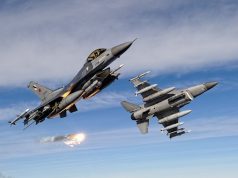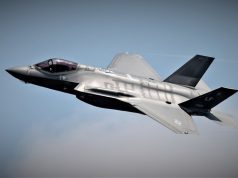Two Norwegian Lockheed Martin F-35A fighter jets demonstrated the operational capability of conventional takeoff and landing by touching down on a highway in Tervo, Finland, marking the first-ever such landing for this aircraft model.
Norwegian F-35A aircraft have been engaged in highway operations training in Finland this week as an integral component of the country’s annual Baana road base exercise, commencing on Monday.
During these exercises, the jets also underwent “hot pit” refueling, a process that involves keeping their engines running while refueling, resulting in reduced downtime for quicker redeployment, enhanced operational efficiency, and increased sortie rates during heightened operational demands.
As of this summer, F-35 nations collectively amassed over 650,000 flight hours, with Norwegian aircraft contributing over 20,000 of those hours. The F-35 comes in various variants, and the recent landing by the Royal Norwegian Air Force on a Finnish motorway represents a historic first for this aircraft type.
While the US has previously executed highway landings with certain F-35Bs, these were of the STOVL version (short takeoff/vertical landing), capable of near-vertical landings suitable for aircraft carriers and roads.
Norwegian Joint Strike Fighters possess a distinctive feature, as they are currently the sole operational aircraft equipped with drag chutes. This technology, slated for integration into forthcoming Finnish and Canadian F-35As, serves the dual purpose of ensuring safe landings during adverse winter weather conditions and reducing the wear and tear on braking systems.
This is a milestone, not only for the Norwegian Air Force but also for the Nordic countries and for NATO. This demonstrates our ability to execute a concept of dispersal. Fighter jets are vulnerable on the ground, so by being able to use small airfields – and now motorways – increase our survivability in war. In addition, this is also a demonstration of the exciting development we have initiated within the military-air cooperation in the Nordic region,” said Major General Rolf Folland, Chief of the Royal Norwegian Air Force.



























